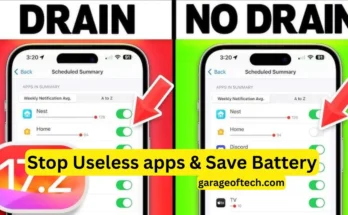In today’s digital environment, users constantly interact with files—documents, videos, audio clips, images, and more. Whether you’re a student downloading notes, a marketer saving media assets, or a content creator managing video files, efficient file handling is no longer optional—it’s essential.
Yet, many users still find themselves overwhelmed by cluttered folders, slow downloads, incompatible formats, or limited access across devices. The growing demand for a smart, centralized, and seamless solution has paved the way for modern file-handling platforms that change how we download, store, access, and manage digital content.
Why Users Demand Better File Management Tools
The digital lifestyle is fast, dynamic, and content-heavy. People download countless files from emails, websites, social media, and file-sharing services daily. But managing those files isn’t always easy.
Without the right system, users face common challenges:
- Difficulty finding downloaded files
- Lack of organization or proper naming
- Storage space running out
- Incompatibility with certain file formats
- Slow or failed downloads
These frustrations lead users to seek out platforms that simplify and streamline their file-handling experience from start to finish.
A Look Back: How File Handling Has Evolved
In the early days of the internet, downloading files was a time-consuming and error-prone task. Manual file transfers, limited bandwidth, and poor organization were the norm. Every file needed user attention—where to save it, how to open it, or even how to rename it.
Now, technology has automated much of the process. Users can set rules for file types, schedule downloads, and even sort files into folders without lifting a finger. This shift from manual handling to smart automation is one of the key reasons modern platforms are so appealing.
What Makes Modern Platforms Stand Out?
Unlike older download managers that focused solely on the act of downloading, new-age platforms are complete ecosystems. Here’s what sets them apart:
- Wide Format Support: From MP4 to PDF to ZIP files, these tools support every common format and some niche ones too.
- Integration with File-Sharing Services: You can download directly from platforms like Google Drive, Dropbox, or even social media.
- Custom Settings: Want video files to go into a separate folder automatically? Modern apps let you set rules that work for you.
- Personalization Options: Users can tweak download paths, set bandwidth limits, or apply filters based on file type or source.
These platforms don’t just manage downloads—they manage your workflow.
Security Matters: Protecting Your Files and Privacy
With cyber threats on the rise, security is more important than ever. Users are rightfully concerned about the safety of their personal and work-related files. That’s why the best file-handling solutions offer enterprise-grade security, including:
- End-to-end encryption during file transfer
- Password-protected downloads for confidential content
- Secure cloud sync to prevent unauthorized access
- Two-factor authentication for user accounts
These features ensure that your downloads are not only fast and organized—but also safe and private.
The Power of Remote Access: Files Anytime, Anywhere
Gone are the days when files were locked inside your desktop or laptop. With work-from-anywhere becoming the new normal, remote access to files is essential. Modern file-handling apps provide:
- Cloud synchronization, so your files are updated across all devices
- Cross-platform compatibility—use it on Windows, Mac, Android, or iOS
- Offline access options, letting you retrieve files even without internet
This level of access gives users freedom, flexibility, and control, especially for those who are always on the move.
Speed Is Not Optional Anymore
Downloading a 2GB file shouldn’t take forever. Yet many users still suffer from slow speeds and interruptions. Advanced file-handling platforms solve this by offering:
- Multi-threaded downloading: Instead of downloading a file linearly, the app downloads different parts at the same time.
- Pause and resume functionality: No need to start over if your connection drops.
- Queue management: Prioritize which files get downloaded first.
This dramatically reduces wait times, making large or multiple downloads smoother and faster.
Compatibility Shouldn’t Be a Problem
Old download managers often failed to support newer or unusual file formats. This created extra work for users who had to convert files or install third-party tools.
Today’s platforms offer universal file compatibility. Whether you’re downloading .mkv videos, .rar archives, or .epub documents, modern file handlers ensure:
- Native support for a wide range of file types
- In-app previews or open options
- Built-in format converters in some tools
This removes unnecessary friction, saving users both time and effort.
Clean, User-Friendly Design is Non-Negotiable
In a world flooded with software tools, the ones that win are those with exceptional user experience. File management should be simple, not stressful. The best platforms focus on:
- Intuitive interfaces with minimal clutter
- Step-by-step onboarding for beginners
- One-click operations for advanced users
- Dark/light modes and language preferences
A well-designed platform removes confusion, making it easier for anyone—tech-savvy or not—to use it confidently.
Smart Storage Solutions That Actually Work
Storage space is another growing concern. Between high-resolution videos, large presentations, and software packages, devices fill up fast. That’s why top file-handling tools now include:
- Cloud integration to offload heavy files
- Automatic compression of large files without loss of quality
- Duplicate file detection and deletion
- Scheduled cleanups to manage cache or unused items
This ensures your device stays optimized, without requiring constant manual cleanup.
How Automation Is Redefining File Organization
Imagine downloading a file and having it instantly categorized by type, source, or date—without touching anything. That’s the power of automation in file handling. Advanced features now include:
- Auto-sorting into folders based on custom rules
- Auto-renaming files for consistency
- Batch processing for bulk downloads or actions
- Smart scheduling, so downloads occur during off-peak hours
Automation is a game-changer for professionals, students, and businesses who deal with digital files daily.
Staying Ahead in a Competitive Market
With so many platforms entering the market, only the ones that innovate consistently manage to stay on top. These platforms win user trust by offering:
- Background downloads that don’t interrupt tasks
- Ad-free experiences
- Browser extensions for instant downloads
- Regular updates that introduce fresh and requested features
User loyalty comes from convenience, speed, and trust—and leading platforms are investing heavily in all three.
What the Future Holds for File Handling
We are heading into an era where AI and machine learning will make file handling even more intelligent. Upcoming developments may include:
- Predictive file organization: Files are auto-sorted before you even download them
- Smart tagging for easier search and retrieval
- Voice-command downloads and file retrieval
- Real-time collaboration within file managers
These innovations will further eliminate manual effort and enhance productivity across all user levels.
Final Thoughts: The Shift Toward Smarter Digital File Management
In a world driven by digital content, the way we handle files has a direct impact on our daily productivity, stress levels, and digital efficiency. Modern file-handling platforms offer more than just faster downloads—they offer a better way to manage your digital life.
By combining automation, security, speed, and a user-focused design, these solutions are transforming how individuals and businesses interact with their files.
If you’re still relying on outdated methods to handle your downloads, it might be time to explore what modern platforms have to offer. Because in the digital age, how you manage your files is how you manage your time.



